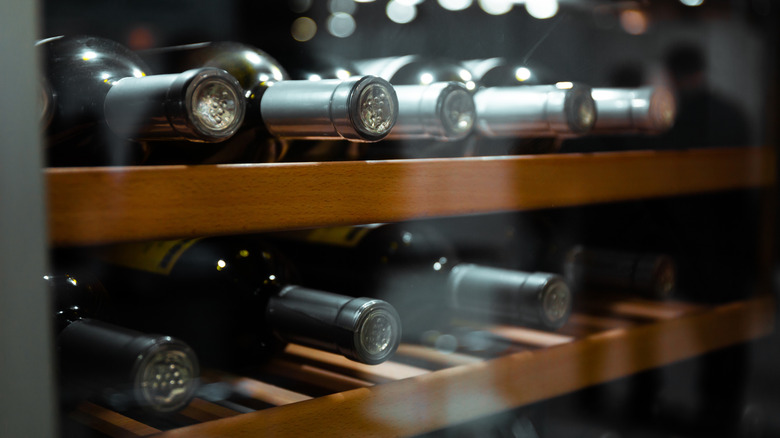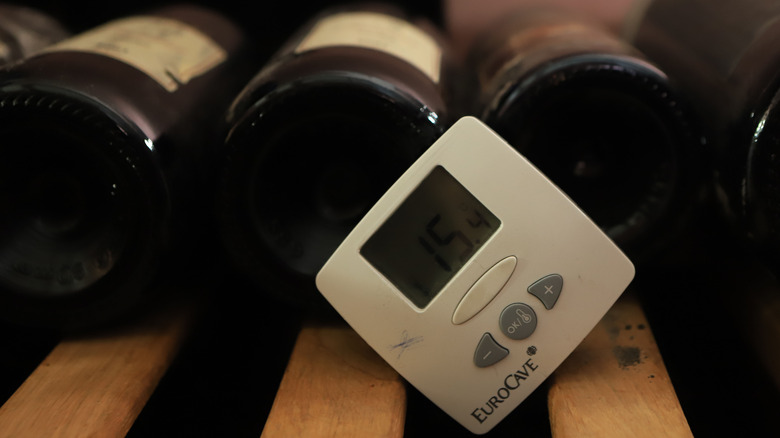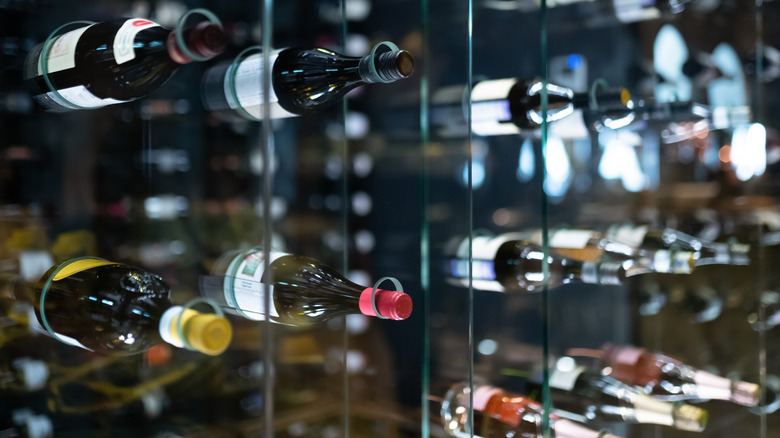Temperature Is Everything When It Comes To Properly Storing Wine
How you store your wine can have a dramatic impact on its quality upon opening. There's a reason why many wineries (primarily in the Champagne wine region) have been storing their vintages underground in cellars for centuries: Heat is one of the worst things that can happen to a bottle. If your bottle of wine, be it white or red, gets over 70 degrees Fahrenheit for a period of time, that heat will start to taint the flavor of your wine.
Once the thermometer gets up to 80 degrees Fahrenheit, you're actually cooking the wine in your bottle. Such an elevated amount of heat can make your wine taste sour. Depending on how hot your bottle gets, it can also cause some major issues with the seal of your bottle, which can become compromised, leading to accidental prolonged oxidation (when a wine is exposed to air). We all want to drink wine that tastes good, and the key to keeping any bottle tasting its best is storing it the right way — particularly at the right temperature.
The right temperature to store your wine
Your goal when storing wine is not only to keep it cool but also to make sure it stays at as constant a temperature as possible. No matter what kind of wine you're storing, the ideal temperature to keep it at is 55 degrees Fahrenheit. Wine stored at that temperature stands the best chance of staying its in its most ideal state for the longest.
That said, it's doubtful that many people have a spot in their homes that stays that naturally cool all year long. Maintaining that constant temperature is where wine fridges come in. With a wine fridge, you get a dedicated space in your home for your wine that's always the right temp.
If you're not quite ready to invest in a fridge, or if you don't drink enough wine where one is practical, you can make do keeping your wine between 45 and 65 degrees Fahrenheit, provided that the temperature remains relatively stable. Wines stored at the lower end of that range will potentially develop crystals on the cork and wines stored at a higher temperature will change a little faster than if they had been stored at an even 55 degrees Fahrenheit.
More wine storage tips
While temperature is perhaps the most important factor to consider when storing your wine, there are a few other things you'll want to do when saving that bottle for later. In addition to making sure that the place you're storing your wine maintains a consistently cool climate, you'll also want it to be pretty dark. Wine has traditionally been stored in caves and cellars, remember?
Just like temperature changes can impact your wine, light exposure can affect your bottle too. Most wine is sold in darker bottles to keep it safer from light. You'll want to make sure you store your bottles not only away from sunlight but also away from any other light sources. The only time your bottle should ideally see light is when you're getting ready to pop it open.
Ideally, you're also storing your wine on its side to keep the cork moist. Storing a bottle upright can make the cork dry out and damage your wine. With these tips in mind, you'll be able to avoid ruining your wines and instead get the most out of them.


